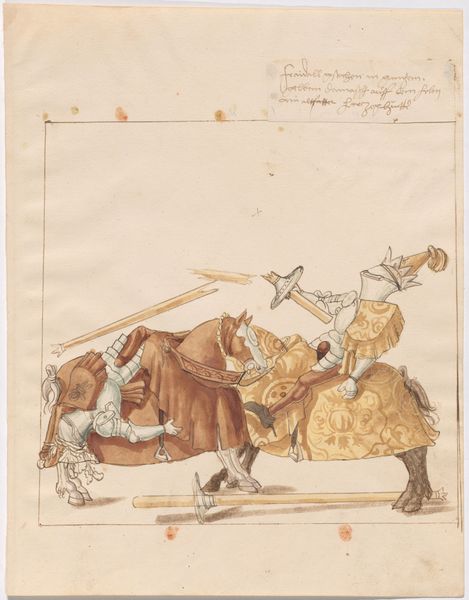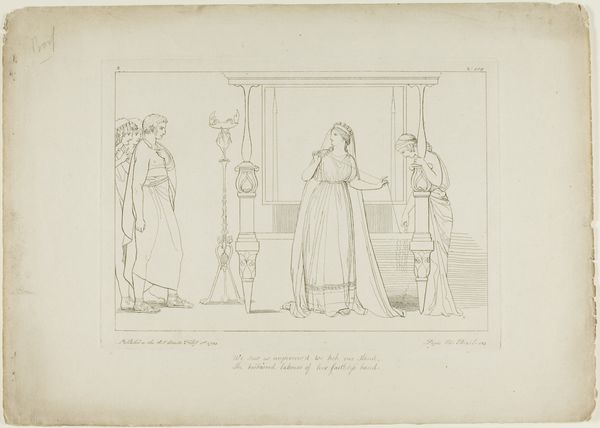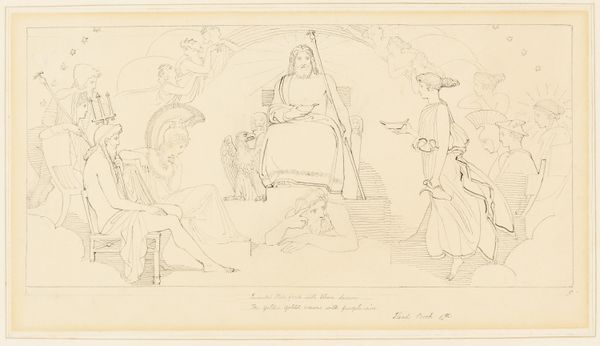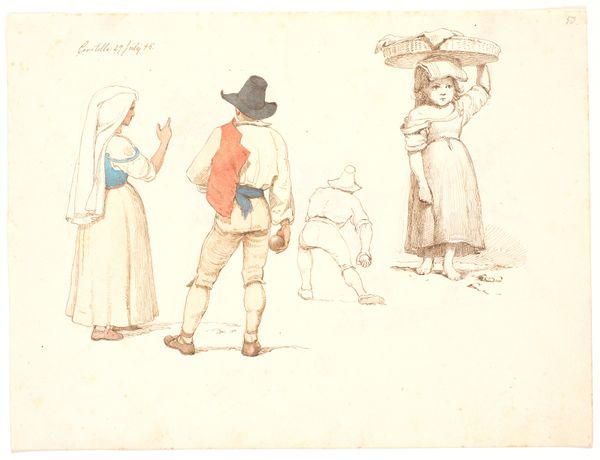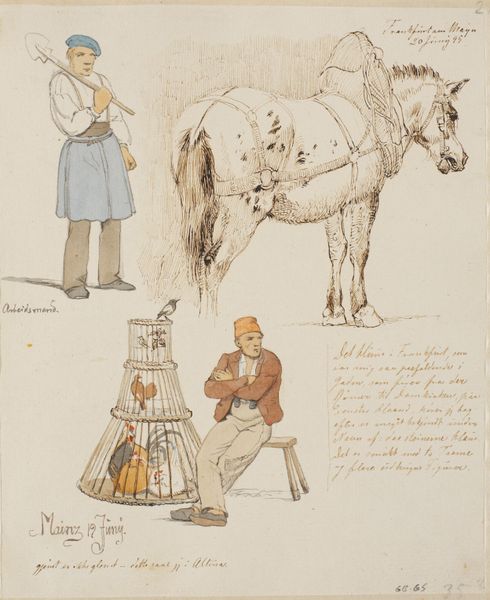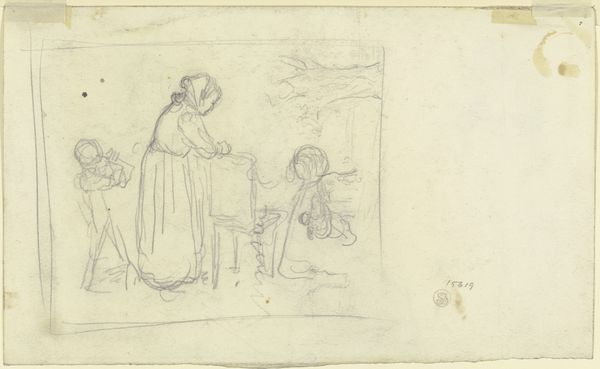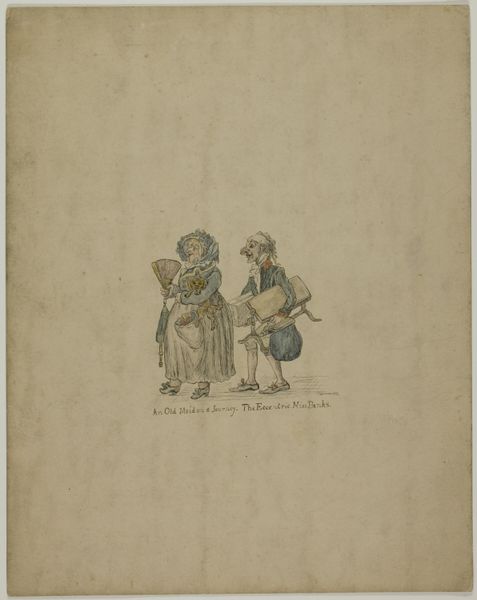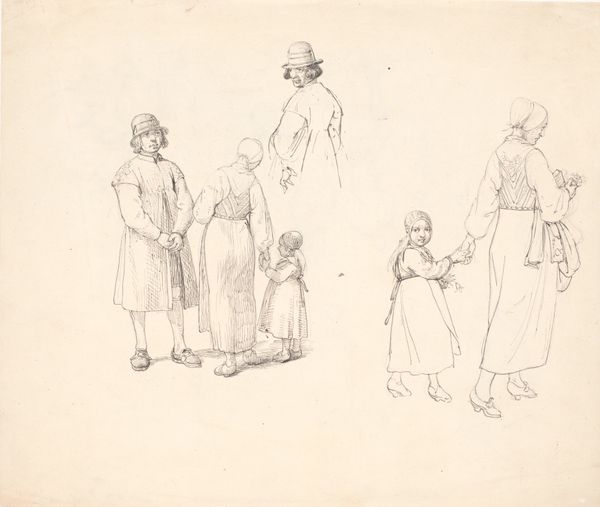
Soldat og kone med to børn, siddende på en bænk. F.n. en hest med oppakning fulgt af en mand 1845
0:00
0:00
drawing, watercolor
#
portrait
#
child-oriented illustration
#
drawing
#
imaginative character sketch
#
narrative-art
#
traditional media
#
landscape
#
personal sketchbook
#
watercolor
#
romanticism
#
sketchbook drawing
#
character design for animation
#
watercolour illustration
#
genre-painting
#
storyboard and sketchbook work
#
cartoon carciture
#
sketchbook art
Dimensions: 211 mm (height) x 176 mm (width) (bladmaal)
Curator: This drawing, "Soldat og kone med to børn, siddende på en bænk. F.n. en hest med oppakning fulgt af en mand," created by Johan Thomas Lundbye in 1845, offers a window into everyday life rendered in watercolor. Editor: It feels immediately domestic, yet poignant. The layering of figures and landscape, the light washes of color—there's a tenderness in the way Lundbye has visually constructed this scene. Curator: The arrangement is divided; we have a family—a soldier, his wife, and two children seated on a bench—and beneath, a horse laden with baggage and a figure in pursuit. This duality establishes a thematic tension. Editor: Precisely! The texture, particularly in the horse’s coat, speaks to Lundbye’s technical handling of watercolor—but it's equally about the animal's burden, both material and perhaps metaphorical, within a society marked by the demands of the military. One can practically sense the physical weight carried and produced. Curator: Note, too, the formal rendering of the soldier's uniform in contrast to the almost hurried execution of the other figures. Is this intentional commentary on social stratification through visual language? Editor: Without question. The uniform is coded. The careful detailing not only designates rank but highlights labor and materiality – the fabrication, the tailored fit. And beyond its function to identify the soldier, it also subtly points to the economic implications of militarization on everyday lives in Romantic-era Denmark. Curator: A fascinating detail is the implied narrative. We can consider the juxtaposition to decode that the family sits static while journey continues apace, underscoring transience versus belonging and inviting speculations about absence and presence, and memory. Editor: It speaks directly to the social context and economic production that make this scene possible: where resources are devoted; the kinds of lives that are structured. Consider the role of sketching itself in this context, of quickly but surely recording what it is in front of them. Curator: And in the end, does this examination and formalization invite one to see more, think critically about construction? It would seem, yes. Editor: It allows us to witness and examine the conditions, context, and construction that brought forth such a poignant, yet complex, view.
Comments
No comments
Be the first to comment and join the conversation on the ultimate creative platform.
